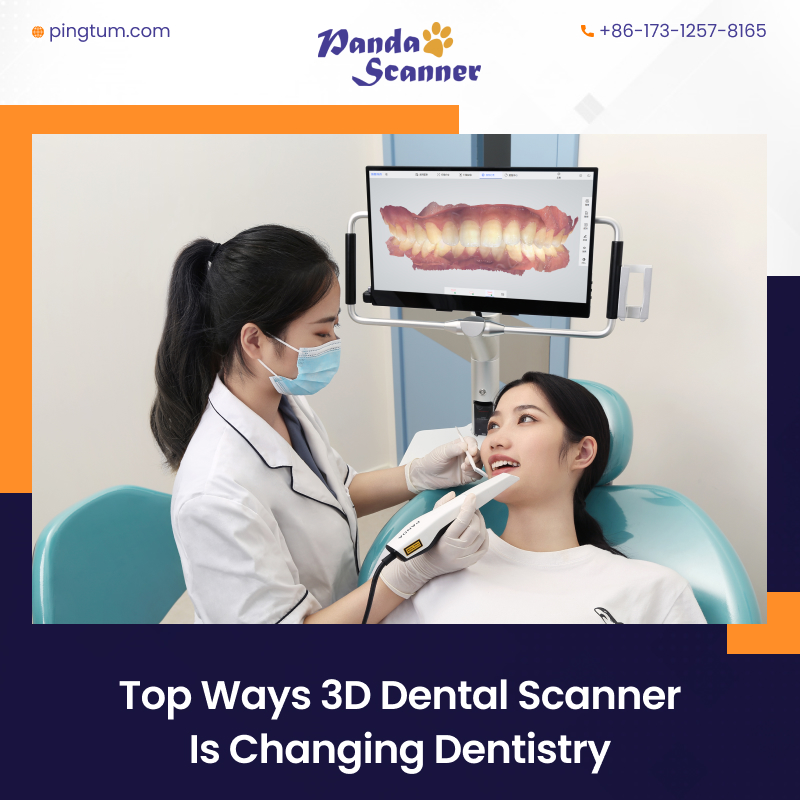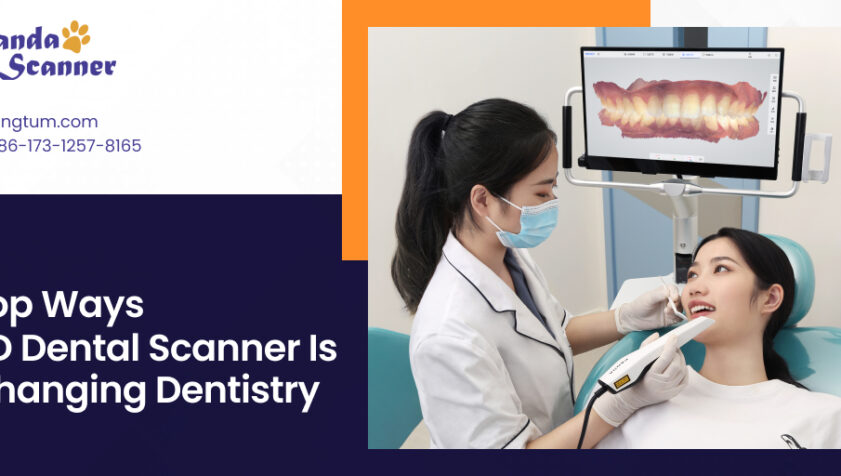3D dental scanners have considerably improved dental imaging as it has eliminated the limitations of traditional imaging approaches such as X-rays. Conventional imaging is extremely complex, tedious, and time-consuming, exposes patients to harmful x-rays, and has high risks of gagging and choking.
3D dental scanners, therefore, are growing in popularity, and have become the set standard currently in quality dental care. Dentists with the help of dental scanners, can diagnose the patient’s buccal cavity, and also obtain impressions of the areas that are out of reach of the traditional imaging system. Therefore, today, dental practitioners are better positioned to provide proper diagnoses and accurate solutions. Thus, many dentists are using 3D intraoral scanners today, and they are using them to offer many types of dental solutions such as dental implants, restorative dentistry, root canals, oral surgery, reconstructive surgery, and other dental solutions. To help you to understand how 3D dental scanners are becoming the face of dentistry, here we have mentioned some of the reasons why it is being used widely.

Top Reasons Why 3Digital Scanners Are Growing in Popularity
3D dental scannerslike the Panda intraoral scanners are helping to improve dentistry in several ways such as it is allowing dentists to conduct diagnosis accurately, reducing treatment time, and helping in many other ways. Let’s take a look at the reasons here to understand why it is growing in popularity, and dentists are increasingly using it over x-ray imaging.
Patients are less exposed to radiation exposure
Unlike in traditional dentistry, using 3D dental scanners does not expose the patients to harmful x-rays. Here, the impressions the procured with the help of laser lights. However, some digital scanners use X-rays for imaging, still, these scanners use a negligible amount of radiation, which can be considered safe.
3D model
While the 2D model scanners can restrict dentists by offering a limited view of the patient’s buccal cavity, the 3D scanners model offers an unrestricted view. The dentists can properly view and diagnose the oral cavities of the patients with more details.
High accuracy
3D dental scanners offer high-quality visual data, and this is why dentists are in a better position to offer a highly accurate diagnosis. With the help of these scanners, dentists can view the condition of nerves, dental structures, pathologies and infections etc. Since dentists can obtain the right details, restorative solutions such as implants come out perfectly.
Efficient
In comparison to traditional dentistry, 3D dental scanners do not take a prolonged period of time to obtain the impression of the patient’s oral cavity. This is why scanners are very efficient and cost-effective options in the long run.
Non-invasive
One of the best benefits of 3D dental scanners is that they are not invasive like the traditional imaging system. In the traditional imaging system, the patients were required to hold silicone mould in their mouths to give the impressions. This was a very unpleasant experience for the patients, and also risky as they could be subjected to gagging and choking. With the help of dental scanners today, patients can comfortably sit to give impressions and are not required to hold the unpleasant gummy material in their mouth
Facilitates easy exchange of information
In conventional dentistry, the dentist is required to obtain the impression of the patient’s oral cavity using alginate materials. Then these are stored to solidify and sent to the laboratory for the lab technicians to create the restoration solutions such as crowns, dentures etc. In contrast, digital dental scanners allow dentists to send dental impressions virtually to the laboratory, and technicians refer to these impressions to fabricate the crowns and dental restoration solutions. So, the exchange of information becomes easy with these dental scanners.
Conclusion
3D dental scanners have helped dentistry to improve a lot, and as you can it has not only helped dentists by making the process easier but also has dentistry patient-friendly. Thus, as a dentist, if you would want to offer flawless dental solutions to patients, you can invest in good quality dental scanners such as Panda intraoral scanners, and gain recognition as a top-notch dentist quickly.






